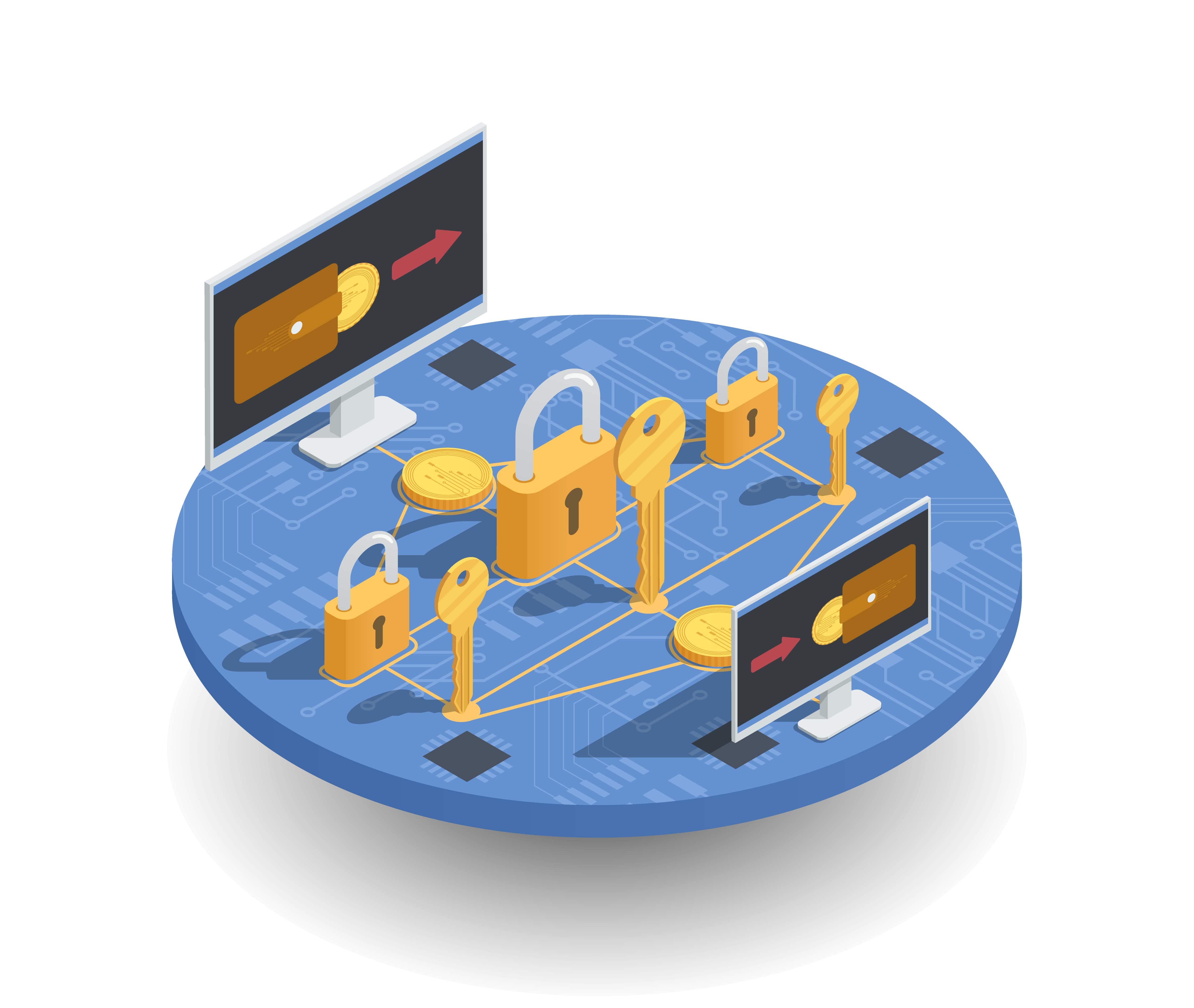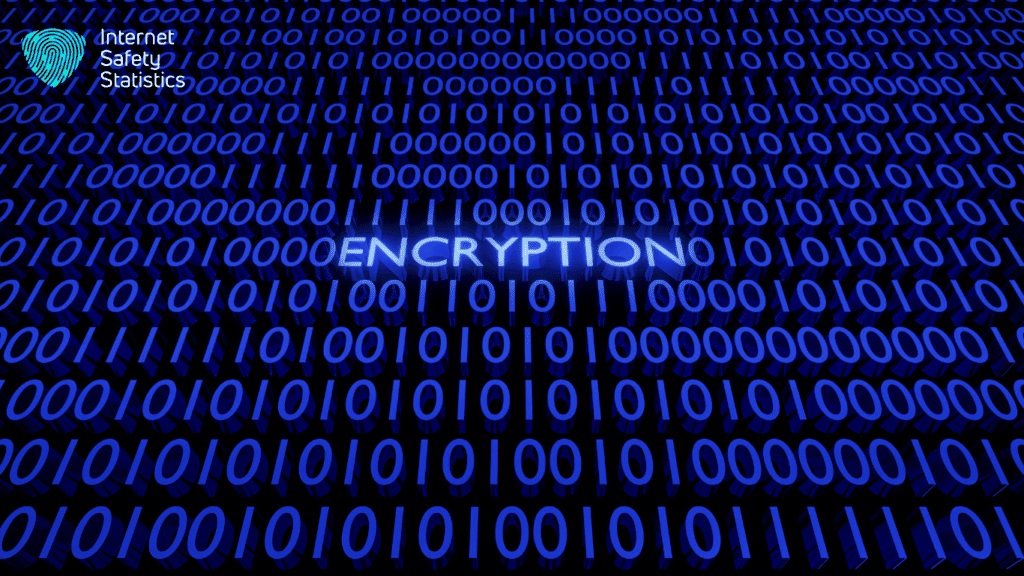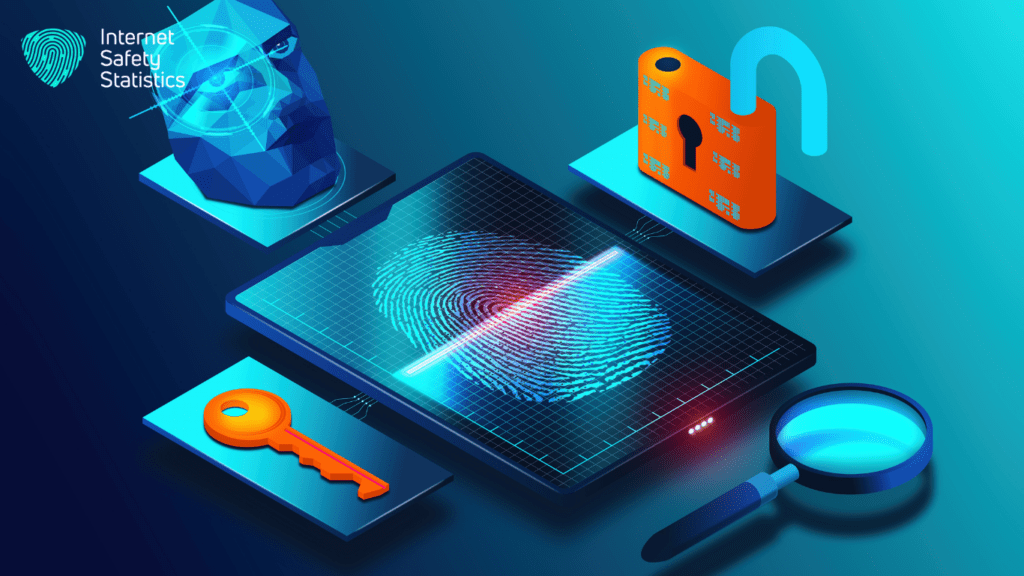
Encryption is a crucial aspect of modern data security, and one of the most widely used algorithms for this purpose is AES encryption. AES stands for Advanced Encryption Standard, a symmetric encryption algorithm that uses a single key for both encryption and decryption processes. In this article, we will delve deep into the realm of AES encryption, exploring its features, the encryption process, and applications and comparing it with other encryption algorithms.
What Is AES Encryption and How Does It Work?
AES encryption (Advanced Encryption Standard) is a powerful and widely used method for encrypting digital information. In simpler terms, it’s like scrambling your data with a secret code, making it unreadable to anyone without the key to unlock it.

What Is It Used For?
- Securing sensitive data online, like bank transactions, medical records, and personal messages.
- Protecting files on your computer or mobile device.
- Encrypting communication channels like VPNs and secure messaging apps.
Features of AES Encryption
AES encryption is a symmetric key algorithm, meaning the same secret key is used for both encryption and decryption. It employs a substitution-permutation network to shuffle the data and generate the encrypted output. The algorithm is designed to be resistant to known attacks and offers a high level of security.
How Does AES Encryption Work?
The AES encryption process involves several steps, including substitution, permutation, and mixing of the data. The data undergoes multiple rounds of encryption using the encryption key, and the final output is the ciphertext. The process is intricate and ensures that the encrypted data is secure and can only be decrypted with the correct key.
- AES encryption uses a symmetric key, meaning the same key is used for both encryption and decryption. This key is like a password that scrambles and unscrambles the data.
- The encryption process involves several rounds of substitutions and permutations, essentially replacing data bits with different ones and shuffling them around in a complex way.
- The number of rounds (10, 12, or 14) and key length (128, 192, or 256 bits) determine the encryption strength. Higher numbers provide more security but take longer to process.
What Are the Key Aspects of the AES Encryption Algorithm?
- Symmetric Key: AES uses a single symmetric key for both encryption and decryption. This key, similar to a password, determines how the data is scrambled and unscrambled. The security of the encryption heavily relies on keeping this key confidential.
- Block Cipher: AES operates on 128-bit blocks of data at a time. Each block is individually encrypted using the same key but with different internal transformations, enhancing security by preventing patterns across blocks.
- Substitution-Permutation Network (SPN): The core of AES involves multiple rounds of substitutions (replacing data bits with others) and permutations (shuffling bits around). These complex transformations make it incredibly difficult to reverse the encryption without the key.
- Key Schedule: Before encryption, the key is expanded into a round key schedule using a specific algorithm. This schedule generates different subkeys for each round, adding another layer of complexity and security.
- Number of Rounds: The number of encryption rounds depends on the key length (128, 192, or 256 bits). More rounds enhance security but also increase processing time. Typically, 10 rounds are used for 128-bit keys, 12 for 192-bit keys, and 14 for 256-bit keys.
- Cypher Modes: While the core AES algorithm encrypts individual blocks, different cypher modes determine how these blocks are processed and combined for real-world applications. Common modes include CBC (Cipher Block Chaining) and CTR (Counter mode), each with its own strengths and weaknesses depending on the use case.
- Security and Standardisation: AES is widely considered a highly secure encryption algorithm due to its robust design, large key space, and resistance to known attacks. It’s the US National Institute of Standards and Technology (NIST) approved standard for symmetric encryption, adopted by governments, militaries, and various industries globally.
- Continuous Improvement: While AES is currently strong, cryptography is an ongoing field of research. Ongoing analysis and cryptanalysis help identify potential vulnerabilities and inform future revisions and standards.

Analysing the Rounds in the AES Encryption Method
The rounds of encryption in AES involve operations such as SubBytes, ShiftRows, MixColumns, and AddRoundKey, which are applied iteratively to the data. These operations ensure that the encrypted output is highly scrambled and secure, making it difficult for unauthorised parties to decipher the original data.
Imagine your data as a set of building blocks. In each round of AES encryption, these blocks undergo a series of mind-bending transformations:
- Confusion: Each block is swapped with another, like shuffling a deck of cards, making it impossible to trace back to the original data.
- Diffusion: The blocks are shifted and mixed, ensuring even a tiny change in the data creates a ripple effect throughout the entire encrypted message.
- Key Incorporation: A unique key, like a secret password, is woven into the mix, making each round dependent on both the data and the key.
Think of it like layers of complexity being added with each round. Cracking the code becomes exponentially harder as the number of rounds increases, like trying to guess a combination lock with hundreds of dials. This is why AES encryption uses 10, 12, or even 14 rounds depending on the key length, making brute-force attacks virtually impossible.
But rounds are not just about brute force. They also introduce non-linearity, making calculations based on the plaintext or key incredibly difficult. Imagine trying to predict the weather – small changes in initial conditions can lead to drastically different outcomes. Similarly, a tiny change in the data before encryption can result in a completely different ciphertext, throwing off any attacker’s calculations.
How Do You Encrypt and Decrypt Data Using AES Encryption?
Encrypting and decrypting data using AES encryption can be done through various methods depending on your technical expertise and specific needs.
Here’s how you can encrypt and decrypt data using AES encryption:
Choose Your Tools
There are various libraries and tools available, depending on your technical expertise. Popular options include:
- For programmers: Libraries like Apache Commons Crypto or Bouncy Castle offer built-in AES functionality.
- For non-programmers: User-friendly applications like VeraCrypt or AxCrypt let you encrypt files with ease.
Generate a Strong Key
Think of this as your secret password. Choose a long, random key (128, 192, or 256 bits) and keep it safe!
Lock It Up! (Encryption)
- Select your data (file, message, etc.).
- Choose an encryption mode (like CBC or CTR) depending on your needs.
- Use your chosen tool and key to encrypt the data.
- The result? An unreadable jumble that only the right key can unlock.
Unlock the Secrets! (Decryption)
- Have the encrypted data and the same key.
- Use the same tool and mode you used for encryption.
- Voila! Your original data reappears, safe and sound.

Step-by-Step Guide to Data Encryption With AES Encryption in Java
Data encryption using AES encryption in Java involves creating an instance of the AES cypher, initialising it with the encryption key, and then performing the encryption process on the data. Decryption follows a similar process, using the same key to decrypt the ciphertext back to the original data.
Choose a Library
Several Java libraries provide AES encryption functionalities. Popular options include:
- javax.crypto: Built-in Java library that requires more manual coding but offers flexibility.
- Apache Commons Crypto: User-friendly library with easier API and good performance.
- Bouncy Castle: Versatile library with various cryptographic algorithms, including AES.
Import Necessary Classes
Depending on your chosen library, import the respective classes containing the AES encryption methods. For example, with Apache Commons Crypto:
import org.apache.commons.codec.binary.Base64;
import org.apache.commons.crypto.cipher.StandardAESCipher;
Generate a Secret Key
Use a secure random number generator to create a strong, unique key. The key length can be 128, 192, or 256 bits. Here’s an example using SecureRandom:
SecureRandom random = new SecureRandom();
byte[] keyBytes = new byte[256 / 8]; // adjust key length as needed
random.nextBytes(keyBytes);
SecretKeySpec key = new SecretKeySpec(keyBytes, "AES");
Create a Cypher Object
Instantiate a cypher object using the chosen library and specify the AES algorithm and desired cypher mode (e.g., CBC, CTR).
// with Bouncy Castle
Cipher cipher = CipherFactory.getInstance("AES/CBC/PKCS5Padding");
cipher.init(Cipher.ENCRYPT_MODE, key);
Prepare the Data for Encryption
Convert your data (e.g., plain text) into a byte array. Remember, AES operates on 128-bit blocks, so padding might be required if your data length isn’t a multiple of 16 bytes.
Encrypt the Data
Use the cypher object to encrypt your data byte array. Libraries provide methods like update and doFinal for processing data chunks and finalising the encryption.
byte[] encryptedBytes = cipher.doFinal(dataBytes);
Encode the Encrypted Data (Optional)
Consider encoding the encrypted data into a Base64 string for easier storage or transmission. Libraries like Apache Commons Codec offer encoding methods.
byte[] encodedBytes = Base64.encodeBase64(encryptedBytes);
Decryption (Similar Steps)
To decrypt, repeat the above steps using the same key and switching the cypher mode to Cipher.DECRYPT_MODE. Remember to decode any encoded data before processing.
Applications of AES Encryption
AES, standing for Advanced Encryption Standard, isn’t just a fancy name – it’s a security powerhouse used across industries to safeguard sensitive data. But where exactly does it shine?

Data at Rest
- File and disk encryption: Protecting sensitive documents, personal files, and entire system drives on computers, mobile devices, and storage servers.
- Database encryption: Securing confidential data stored in databases across various industries like healthcare, finance, and government.
- Backup encryption: Ensuring the security of sensitive data, even in backups, against unauthorised access or data breaches.
Data in Transit
- Secure communication channels: Encrypting data transmission over networks, including online transactions, messaging apps, VPN connections, and secure email protocols.
- Cloud storage: Protecting data stored in cloud platforms like Dropbox, Google Drive, or Microsoft OneDrive while at rest and in transit.
- Software updates and downloads: Verifying the integrity and authenticity of software updates and digital downloads through digital signatures often secured with AES.
Device and System Security
- Full disk encryption: Encrypting all hard drives of laptops, desktops, and mobile devices for enhanced protection against physical theft or unauthorised access.
- Bootloader and firmware protection: Securing sensitive system components like bootloaders and firmware to prevent tampering or malicious modifications.
- Payment terminals and point-of-sale systems: Encrypting sensitive payment information (like credit card numbers) during transactions to minimise the risk of data breaches.
Additional Applications
- Intellectual property protection: Securing confidential company data, trade secrets, and proprietary information to prevent unauthorised disclosure or theft.
- Military and government communications: Encrypting classified information and communication channels for national security purposes.
- Medical record protection: Ensuring the privacy and confidentiality of patient medical records and health data in healthcare institutions.
Difference Between AES Encryption And Other Encryption Algorithms
While AES is a widely used and trusted encryption algorithm, it’s not the only option available. Here’s a comparison of AES with other notable algorithms to highlight their key differences:
Comparing AES With the DES Algorithm
AES and DES (Data Encryption Standard) are both block cyphers, but AES employs a variable key length and operates on 128-bit blocks, while DES uses a fixed key length of 56 bits. AES offers improvements in security and performance compared to DES, which has made it the preferred choice for modern encryption.
Key Length
- AES Encryption: Offers three key lengths: 128, 192, and 256 bits, providing stronger security with longer keys.
- DES Encryption: Limited to a 56-bit key, considered insecure due to advancements in computing power.
Design Structure
- AES Encryption: Uses a substitution-permutation network, incorporating both substitution and permutation operations for increased complexity.
- Feistel Cipher: DES employs a Feistel cypher structure, which involves splitting blocks of data and applying rounds of encryption.
Rounds
- AES Encryption: The number of rounds varies based on the key length: 10 rounds for 128-bit keys, 12 rounds for 192-bit keys, and 14 rounds for 256-bit keys.
- DES Encryption: Uses only 16 rounds, contributing to its relative weakness compared to AES encryption.
Performance
- AES Encryption: Generally faster than DES in software implementations, making it more suitable for modern applications.
- DES Encryption: It can be faster in hardware implementations, but its security limitations make it less practical for most uses.
Security
- AES Encryption: Considered highly secure and resistant to known attacks, making it the preferred choice for most modern encryption applications.
- DES Encryption: No longer considered secure due to its short key length and vulnerabilities to brute-force attacks.
Applications
- AES Encryption: Widely used for various purposes, including file encryption, secure communication protocols, wireless security, and data protection in cloud storage.
- DES Encryption: Replaced by AES Encryption in most applications due to its security concerns, but might still be found in legacy systems.
Analysing the Key Differences Between AES and Other Encryption Methods
AES Encryption reigns supreme in the world of encryption, but it’s not alone. Analysing its key differences with other established and emerging methods allows for a nuanced understanding of its strengths and limitations. Here’s a breakdown:
Symmetric vs. Asymmetric Algorithms
- AES: A symmetric algorithm, meaning the same key encrypts and decrypts data. This offers speed and efficiency but requires secure key sharing.
- RSA: An asymmetric algorithm where separate public and private keys exist. Encryption happens with the public key, while decryption requires the private key, offering better key management but slower performance.
Block vs. Stream Cyphers
- AES: A block cypher operating on fixed-size data blocks. This simplifies hardware implementation but might introduce vulnerabilities at block boundaries.
- ChaCha20/Salsa20: Stream cyphers, processing data continuously like a stream. They are lightweight and efficient but might have limitations in specific use cases.
Security Focus
- AES Encryption: Designed for confidentiality, ensuring data remains unreadable to unauthorised parties.
- Homomorphic Encryption: Enables computations directly on encrypted data, offering privacy-preserving calculations, but is still under development and computationally expensive.
Quantum-Resistance
- AES: Vulnerable to potential attacks from future quantum computers.
- Post-quantum Cryptography (PQC): Emerging algorithms are designed to resist such attacks, like lattice-based or code-based approaches. However, they are still in their early stages of development and standardisation.
AES encryption stands as a robust and widely trusted shield for safeguarding sensitive data in today’s digital world. From securing files and communication channels to protecting information in cloud storage, its versatility and strength make it a valuable tool for individuals and organisations alike. Remember, taking steps to leverage this powerful encryption can significantly enhance your data security and privacy.
